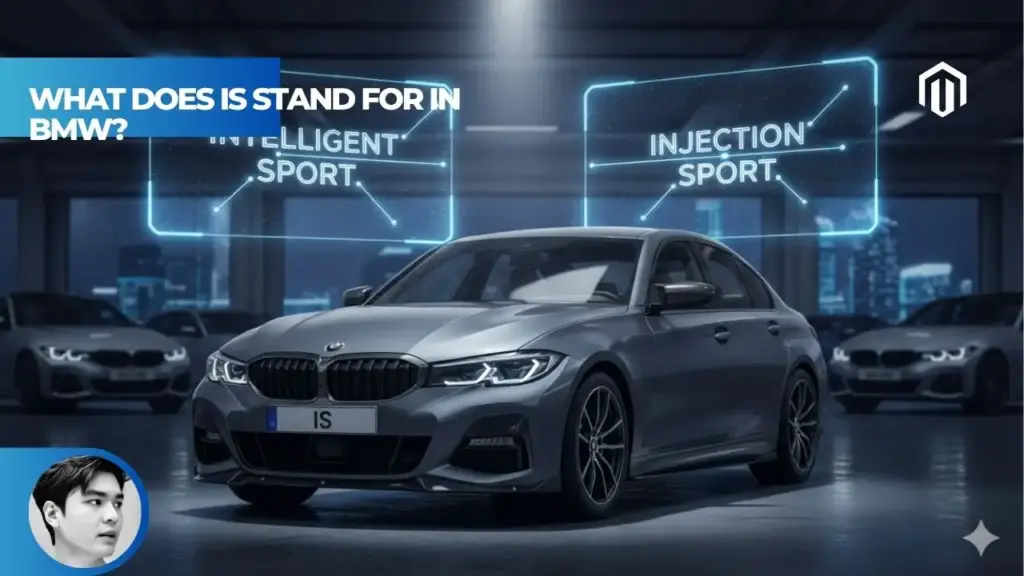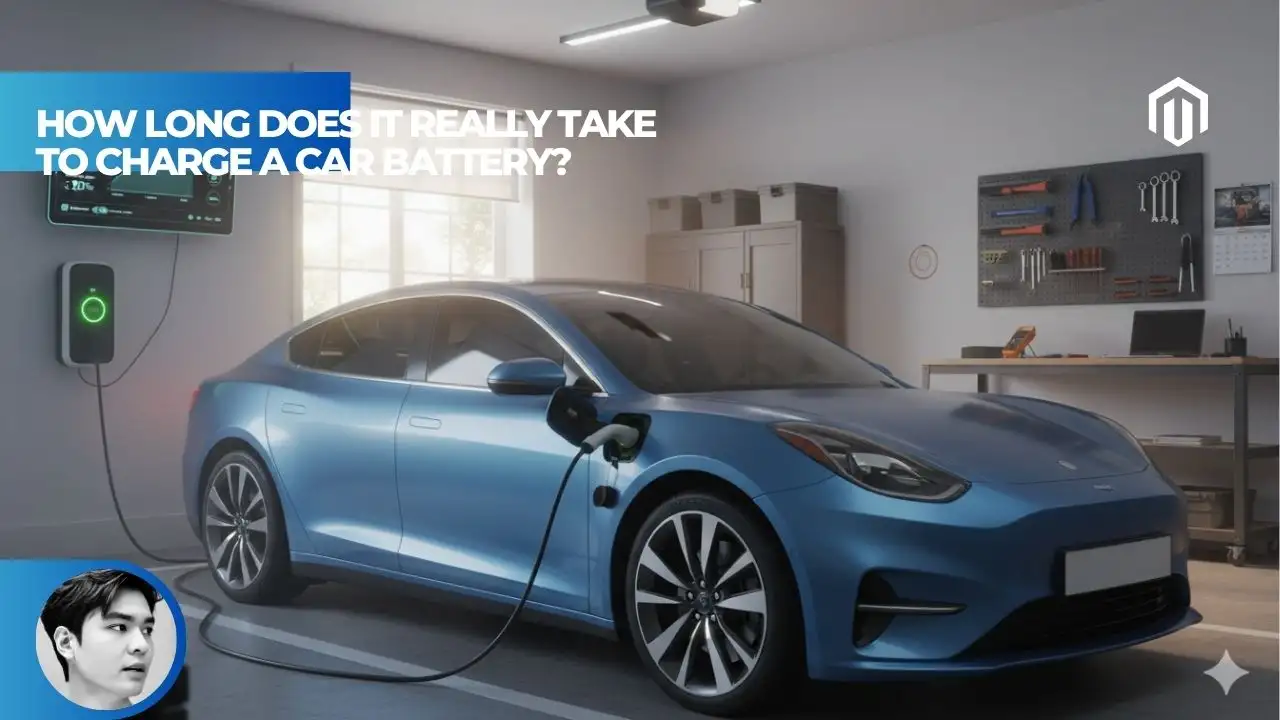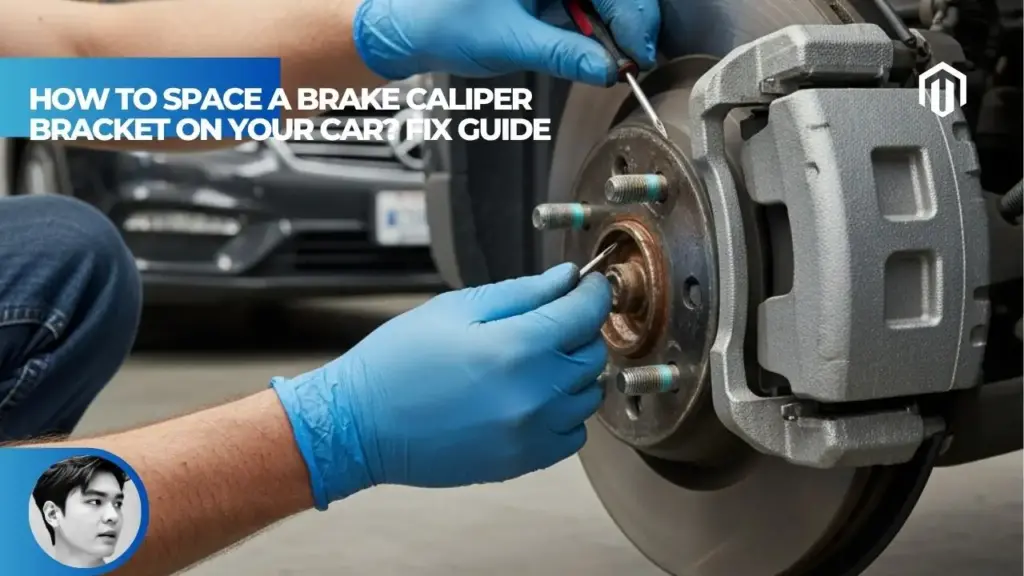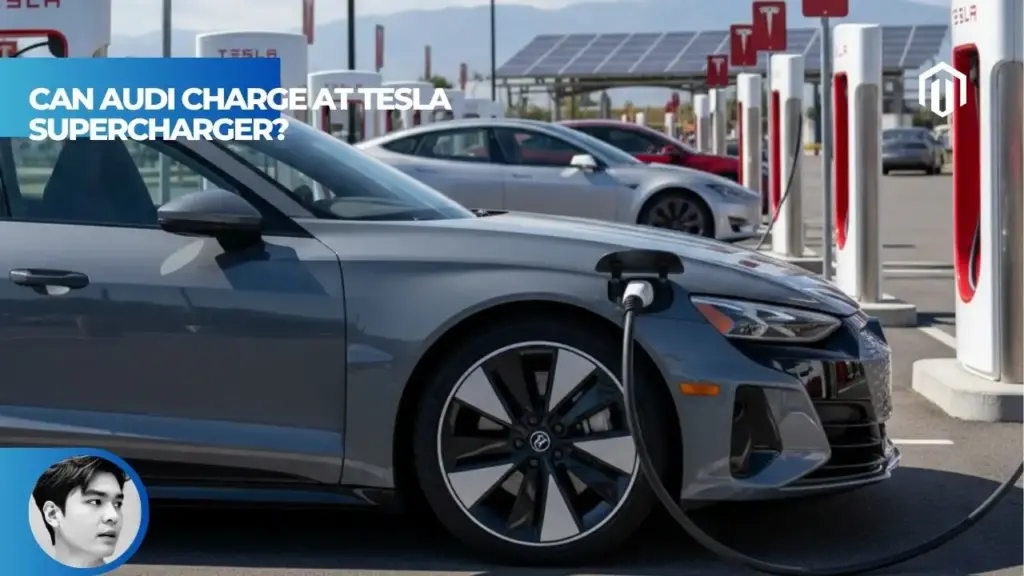You may also like:
- 【Explained】What Did BMW Start Making Before Cars? (From Planes to Cars)
- 【Explained】What Type of Gas Do BMW Take? Premium Fuel, Octane, and Knocking Explained
- 【Explained】What’s Better: BMW M3 or M4? The Key Difference
- 【Explained】Can BMW Charge at Tesla Supercharger? The NACS Adoption Timeline Explained
- 【Explained】What Is the Difference Between a BMW X3 and X5? (A 2025 Buyer’s Guide)
In classic BMW models, the “IS” designation stands for “Injection Sport” — where ‘I’ indicates fuel injection technology and ‘S’ denotes sport-oriented performance upgrades including sport-tuned suspension, sport seats, and aerodynamic enhancements. This badge was primarily used in North America during the 1980s and 1990s to distinguish sportier two-door coupes from their four-door sedan counterparts, particularly on iconic models like the E30 325is and E36 318is[1].
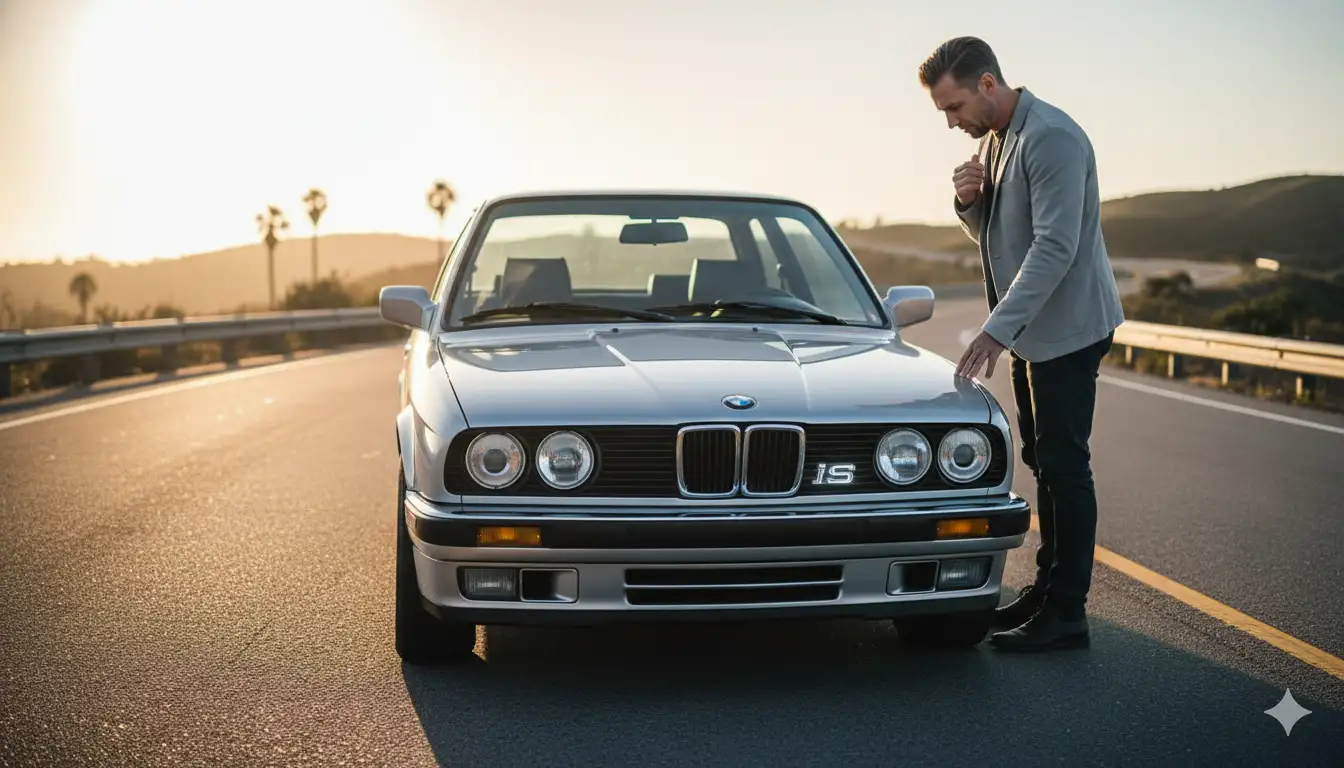
What Does IS Stand For in BMW – The Injection Sport Meaning
The BMW IS nomenclature represents a fascinating chapter in the brand’s North American history. According to Autvex’s research on BMW heritage models, this designation emerged during the crucial transition from carbureted to fuel-injected engines, marking both technological advancement and marketing strategy.
BMW IS Model Designation Meaning
The IS designation combines two distinct elements that defined BMW’s performance-oriented vehicles of the era. The ‘I’ proudly announced the presence of fuel injection technology—a significant upgrade over carburetors in the 1970s and 1980s—while the ‘S’ indicated sport-specific enhancements that transformed standard models into driver-focused machines[2].
This dual-meaning badge served multiple purposes for BMW North America:
- Differentiating premium sport models from base versions
- Justifying higher price points through clear feature designation
- Creating a performance hierarchy within model lines
- Simplifying model identification for American consumers
The IS models commanded 15-20% price premiums over standard ‘i’ variants, reflecting their enhanced equipment and exclusivity.
BMW I and IS Acronym Meaning
Understanding the progression from ‘I’ to ‘IS’ reveals BMW’s methodical approach to model differentiation. The standalone ‘I’ suffix first appeared when BMW transitioned from carburetion to Bosch fuel injection systems, representing “Injection” or occasionally “Injected” in marketing materials[1].
The evolution of BMW suffixes:
- Pre-1970s: No suffix (carbureted engines standard)
- 1970s onward: ‘i’ for fuel injection
- 1980s-1990s: ‘is’ for injection + sport package
- 2000s onward: Model-specific designations (Ci, Si, etc.)
IS Badge on Older BMWs
The IS badge became a coveted symbol among BMW enthusiasts, particularly in the North American market where it indicated the most desirable non-M variants. These badges appeared exclusively on factory-designated models, though many standard ‘i’ models have since received aftermarket IS badges from owners seeking the sportier appearance[3].
Authentic IS badges featured:
- Chrome-plated zinc construction
- Specific font matching BMW’s corporate identity
- Precise spacing between letters
- Factory adhesive backing with alignment guides
Breaking Down the BMW IS Designation
Each letter in the IS designation carried specific meaning, creating a clear hierarchy within BMW’s complex model range during the 1980s and 1990s.
BMW i (Fuel Injection) Meaning
The ‘i’ suffix revolutionized BMW’s model naming when introduced, signifying the adoption of electronic fuel injection technology. This represented a major technological leap from mechanical fuel delivery systems, offering improved performance, efficiency, and reliability[4].
Benefits of fuel injection designated by ‘i’:
- 15-20% better fuel economy versus carburetors
- More consistent power delivery across RPM range
- Easier cold starts in varying climates
- Lower emissions meeting stricter regulations
- Reduced maintenance requirements
The ‘i’ designation became so synonymous with BMW that it persists today on gasoline models, though its original technical significance has evolved.
BMW Model Suffix S Meaning
The ‘S’ in BMW’s nomenclature consistently indicated “Sport” across all applications, whether standalone or combined with other letters. This designation promised specific performance and handling upgrades that enhanced the driving experience beyond standard specifications[2].
Standard ‘S’ package enhancements included:
- Sport-tuned suspension (typically 15mm lower)
- Limited-slip differential (25% or 40% lock)
- Sport seats with enhanced bolstering
- Three-spoke M-Technic steering wheel
- Upgraded anti-roll bars
- Performance-oriented gear ratios
BMW 325is Meaning
The 325is represents the quintessential IS model, combining BMW’s proven M20B25 2.5-liter inline-six with comprehensive sport upgrades. Produced for both E30 (1987-1991) and E36 (1992-1995) generations, this model perfectly exemplified the IS philosophy[5].
Breaking down “325is”:
- 3: 3 Series platform
- 25: 2.5-liter engine displacement
- i: Fuel injection system
- s: Sport package and coupe body style
The 325is delivered 168 horsepower in E30 form and 189 horsepower in the E36 generation, representing significant performance for the era.
BMW 318is What Does S Mean
The 318is applied the same IS formula to BMW’s smaller-displacement four-cylinder engine, creating an affordable entry point into sport-oriented BMW ownership. The ‘S’ maintained its sport designation but with model-specific interpretations[3].
E30 318is (1989-1991) specifications:
- M42B18 1.8-liter DOHC four-cylinder
- 134 horsepower at 6,000 RPM
- Sport suspension and limited-slip differential
- Exclusive two-door coupe body only
- Base price: $21,970 (approximately $53,000 in 2025 dollars)
The 318is proved that sport designation wasn’t reserved for six-cylinder models, democratizing BMW’s performance heritage.
Specific BMW IS Models and Their Era
The IS designation appeared across multiple generations and models, each interpreting the sport philosophy through contemporary engineering and design.
BMW E30 325is Features
The E30 325is (1987-1991) established the IS legacy in North America, becoming the most sought-after non-M E30 variant. This model combined proven mechanicals with focused sport upgrades that transformed the driving experience[6].
| Feature | Standard 325i | 325is Enhancement |
|---|---|---|
| Suspension | Standard springs | Sport-tuned, 15mm lower |
| Differential | Open | 25% limited-slip |
| Seats | Standard comfort | Sport with thigh support |
| Steering Wheel | Four-spoke | Three-spoke M-Technic |
| Body Style | Sedan/Coupe | Coupe only |
| Wheels | 14-inch steel/alloy | 14-inch BBS-style alloy |
BMW E36 318is Coupe
The E36 318is (1992-1996) represented BMW’s evolution of the IS concept, utilizing the new M42/M44 four-cylinder engines while maintaining sport-focused character. When shopping for used examples, these models offer exceptional value in the classic BMW market[5].
E36 318is highlights:
- 138 horsepower (M42) or 140 horsepower (M44)
- Standard five-speed manual transmission
- Exclusive coupe body style in North America
- Sport suspension with progressive-rate springs
- Optional leather sport seats
E30 i vs is vs ic
Understanding the E30 suffix hierarchy helps decode BMW’s model strategy during this pivotal era. Each variant served specific market segments with distinct feature sets[1].
E30 model suffix comparison:
- i (325i): Fuel injection, available in sedan/coupe
- is (325is): Injection + sport, coupe only
- ic (325ic): Injection + cabriolet (convertible)
- e (325e): “Eta” efficiency-focused engine
- es (325es): Eta + sport (rare combination)
- ix (325ix): Injection + all-wheel drive
BMW IS Sport Package or Coupe
The IS designation served dual purposes in North America: identifying both sport equipment and body style. This created confusion as not all IS models received identical sport packages, with specifications varying by year and market[7].
According to Autvex’s BMW heritage database:
- 1987-1989: Full sport package standard on all IS models
- 1990-1991: Some IS models were essentially rebadged coupes
- 1992-1995: Sport content varied by specific model
- Regional variations existed between East/West coast specifications

Difference Between BMW i and is Models
The distinction between ‘i’ and ‘is’ models extended beyond badging to encompass meaningful mechanical and aesthetic differences that justified separate model designations.
Difference Between 325i and 325is
The 325i and 325is shared fundamental architecture but diverged significantly in execution and target audience. Modern BMW comparisons still reference these classic differentiators[3].
| Aspect | 325i (E30) | 325is (E30) |
|---|---|---|
| Body Styles | 2-door, 4-door | 2-door only |
| Base Price (1989) | $25,650 | $27,450 |
| Suspension | Standard M-Technic | Sport M-Technic |
| Differential | Open | 25% LSD |
| Weight | 2,844 lbs (4-door) | 2,756 lbs |
| 0-60 mph | 8.4 seconds | 7.9 seconds |
Was a BMW 325is Always a Coupe
In the North American market, yes—the 325is was exclusively offered as a two-door coupe. This body style exclusivity became a defining characteristic of the IS designation, though European markets received different configurations[8].
North American IS body style policy:
- E30 325is: Coupe only (1987-1991)
- E36 325is: Coupe only (1992-1995)
- E36 318is: Coupe only (1992-1996)
- E30 318is: Never offered four-door variant
BMW used this strategy to simplify model identification and create clear market segmentation between sport coupes and practical sedans.
Is the ‘is’ Model More Powerful Than the Standard ‘i’ Model
Interestingly, IS models typically produced identical horsepower to their ‘i’ counterparts, as both used the same base engines. The performance advantages came from weight reduction, gearing changes, and chassis enhancements rather than increased power[4].
Performance advantages of IS models:
- 5-7% lighter due to two-door construction
- Quicker acceleration via shorter final drive ratios
- Higher cornering speeds through sport suspension
- Better traction with limited-slip differential
- Enhanced driver feedback via sport steering setup
Real-world performance improvements typically measured 0.3-0.5 seconds faster to 60 mph despite equal power ratings.
Related BMW Suffix Meanings for Context
Understanding other BMW suffixes helps contextualize the IS designation within the broader naming convention system that evolved over decades.
BMW C (Coupe or Cabriolet) Meaning
The ‘C’ suffix created confusion as it indicated different body styles across model generations. Initially meaning “Coupe,” it later designated “Cabriolet” (convertible) before being replaced by more specific nomenclature[1].
‘C’ suffix evolution:
- 1960s-1970s: C = Coupe (2800CS, 3.0CS)
- 1980s: C = Cabriolet/Convertible (325ic)
- 2000s: Ci = Coupe injection (E46 330Ci)
- 2010s: Replaced by separate model numbers
BMW e (eta engine) Meaning
The lowercase ‘e’ designated BMW’s “eta” efficiency-focused engines, prioritizing fuel economy over performance. These models represented BMW’s response to fuel crises and CAFE regulations[6].
Eta engine characteristics:
- Lower redline (4,750 RPM)
- Increased torque at low RPM
- Taller gear ratios
- 20-25% better fuel economy
- Reduced peak horsepower
The 325e produced 121 horsepower versus the 325i’s 168, illustrating the efficiency-performance tradeoff.
BMW M (Motorsport) Meaning
The ‘M’ designation represents BMW’s Motorsport division, indicating the highest performance variants with extensively modified engines, suspension, and aerodynamics. Unlike IS models, M cars received unique engines and often different body panels[9].
M versus IS hierarchy:
- M models: Complete performance redesign
- IS models: Sport package on standard platform
- i models: Standard fuel-injected variants
- Base models: Entry-level specifications
BMW L (Long Wheelbase) Meaning
The ‘L’ suffix indicates extended wheelbase versions, primarily on luxury sedans. This designation focuses on rear passenger comfort rather than sport performance[2].
L model specifications typically include:
- 4-5 inches additional wheelbase
- Enhanced rear legroom
- Executive seating packages
- Limousine-oriented features
- Available primarily on 7 Series
BMW T (Touring/Wagon) Meaning
The ‘T’ suffix designates Touring models—BMW’s term for station wagons. These vehicles combine sedan practicality with increased cargo capacity while maintaining BMW driving dynamics[3].
Touring model characteristics:
- Extended roofline for cargo
- Fold-flat rear seats
- Self-leveling rear suspension
- Similar performance to sedan variants
- Limited North American availability
BMW X (All-Wheel Drive) Meaning
The ‘X’ originally indicated all-wheel drive (xDrive in modern terminology) before becoming associated with BMW’s SUV lineup. Modern X models continue this tradition with standard or available all-wheel drive[4].
X designation evolution:
- 1985-1991: 325ix (AWD 3 Series)
- 1999: X5 launches SUV line
- 2003 onward: xDrive replaces ix
- Current: X1-X7 SUV range
Modern BMW Nomenclature Evolution
BMW’s naming conventions have undergone significant transformation, retiring classic suffixes in favor of clearer model differentiation strategies.
Why Did BMW Stop Using the ‘is’ Designation on New Models
BMW discontinued the IS designation in the late 1990s as part of a comprehensive nomenclature restructuring. The company recognized that using suffixes to indicate both body styles and equipment levels created unnecessary confusion[10].
Reasons for IS retirement:
- Model proliferation required clearer differentiation
- Global harmonization of naming conventions
- Body style separation into distinct model lines
- Package simplification with standardized sport options
- Marketing clarity for international audiences
The last factory IS model was the 1999 E36 323is in limited markets, marking the end of an era.
Current BMW Model Suffixes
Modern BMW nomenclature employs a streamlined suffix system focusing on powertrain type rather than body style or equipment level. According to Autvex’s analysis of current BMW lineup structures, this system provides clearer global communication[8].
Current suffix meanings:
- i: Gasoline/petrol engines
- d: Diesel engines
- e: Plug-in hybrid (PHEV)
- M: Motorsport division models
- L: Long wheelbase (7 Series only)
Body styles now receive separate model numbers (4 Series for coupes, 5 Series for sedans) rather than suffix designation.
BMW IS Meaning Today
Today, the IS designation exists only in historical context and enthusiast discussions. However, BMW has created spiritual successors through M Sport packages and dedicated performance models[6].
Modern equivalents to classic IS models:
- M Sport Package: Closest to original IS concept
- 2 Series Coupe: Spiritual successor to 3 Series IS
- M Performance models: Bridge between standard and M
- Individual packages: Customization beyond sport
Does ‘IS’ Stand for Anything Else in BMW’s Current Naming Convention
In current BMW terminology, ‘IS’ has no official meaning or application. The letters ‘I’ and ‘S’ appear separately (i for gasoline, S in SUV model names like X5 sDrive40i) but never as the combined IS suffix[7].
Instances where ‘IS’ might cause confusion:
- i: Still indicates injection/gasoline
- S: Appears in sDrive (rear-wheel drive)
- iS: Not used in any current model
- Si: Former sedan designation (discontinued)
- iX: Electric SUV line (different meaning entirely)
Modern BMW buyers encounter these letters in different contexts than classic IS enthusiasts remember.
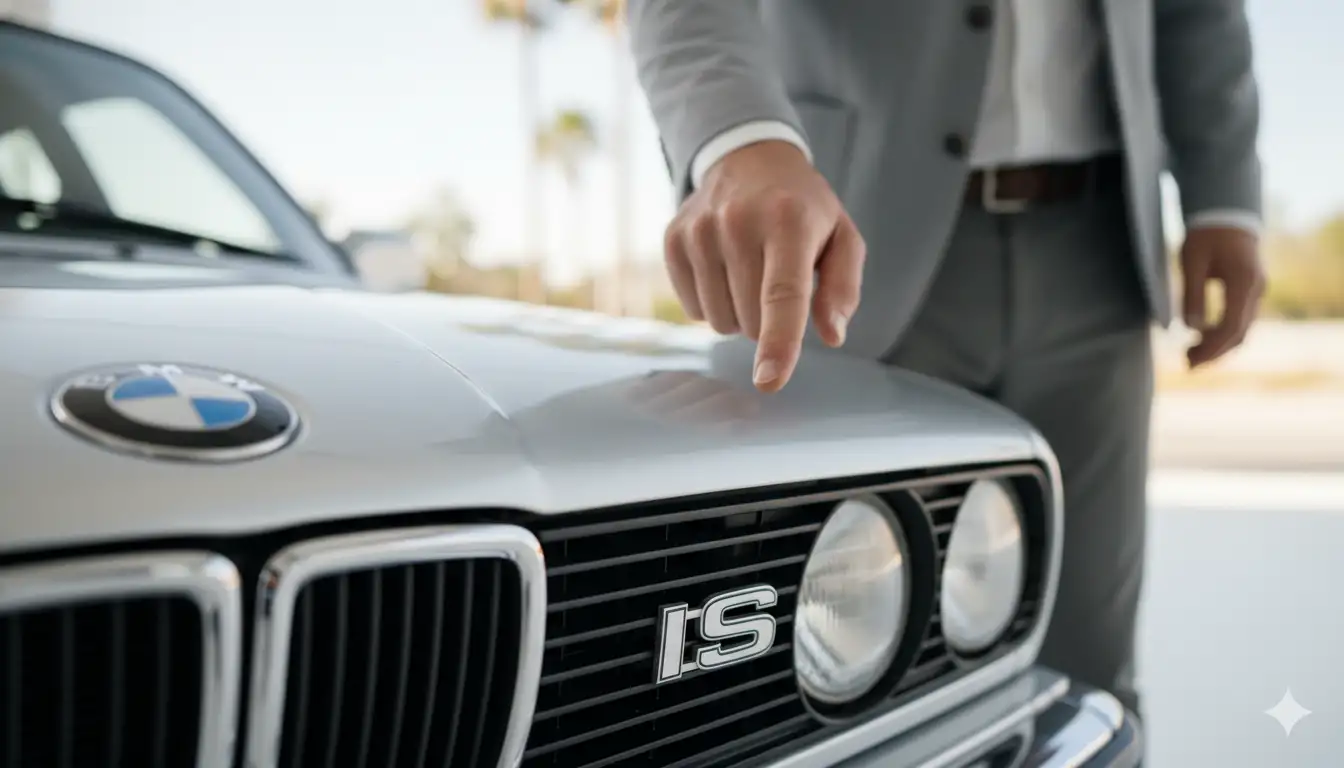
Key Takeaways
- IS definitively stood for “Injection Sport” combining fuel technology with performance upgrades
- North American exclusive designation primarily distinguished two-door sport coupes from sedans
- Not more powerful but better equipped with sport suspension, LSD, and performance features
- Last used in 1999 before BMW restructured naming conventions globally
- Authentic IS badges indicate factory sport packages though many replicas exist
- Modern equivalent is M Sport Package offering similar enhancement philosophy
- Historical significance remains strong with IS models commanding premium prices today
Decision Path / Next Steps
- For Classic BMW Buyers: When evaluating E30 or E36 IS models, verify authentic sport equipment through VIN decoding and original window stickers. Check for matching numbers on limited-slip differentials, sport seat date codes, and suspension components. Budget 15-25% premium over standard ‘i’ models for genuine IS variants. Consider BMW reliability at different mileages when shopping.
- For BMW Enthusiasts: Research specific IS production numbers for investment potential—E30 318is models are particularly rare with only 12,366 produced for North America. Join BMW CCA (Car Club of America) for access to historical documentation and authentication resources. Document any IS model’s originality as values continue appreciating.
- For Modern BMW Shoppers: Look for M Sport packages as the contemporary IS equivalent, offering similar sport-focused enhancements. Understand that modern Gran Coupe models blur traditional coupe/sedan distinctions differently than classic IS designations. Focus on equipment content rather than suffix meanings when comparing current models.
FAQs
What is the main difference between a BMW ‘i’ and a BMW ‘is’?
The ‘i’ indicates fuel injection only, while ‘is’ combines injection with sport features including upgraded suspension, sport seats, and often represented the two-door coupe version.
Did ‘is’ always stand for ‘sport’ on BMW models?
Yes, the ‘s’ consistently meant sport across all BMW models, indicating performance-oriented upgrades beyond the standard ‘i’ fuel-injected versions.
Why did BMW stop using the ‘is’ designation on new models?
BMW modernized their naming system, using separate model lines (2/4 Series for coupes) instead of suffix letters to distinguish body styles and sport packages.
Was a BMW 325is always a coupe?
In North America, yes—the ‘is’ designation typically indicated the two-door coupe variant, while 325i referred to the four-door sedan.
What does ‘Ci’ stand for in the BMW E46 generation?
‘Ci’ stands for Coupe injection—BMW temporarily used this designation before transitioning to numbered series for different body styles.
What is the meaning of the letter ‘S’ in older BMW models like the E30?
The ‘S’ stood for Sport, indicating enhanced performance features including sport suspension, seats, and sometimes a limited-slip differential.
Is the ‘is’ model more powerful than the standard ‘i’ model?
Not necessarily in horsepower, but ‘is’ models included performance enhancements like better suspension and handling characteristics for sportier driving.
Does ‘IS’ stand for anything else in BMW’s current naming convention?
No, modern BMWs don’t use ‘IS’ designation; they use model numbers and M Sport packages to indicate performance variants.
References
- BMW Forums. (2004). BMW suffixes. https://www.bimmerforums.com/forum/showthread.php?199427-BMW-suffixes
- Reddit r/E30. (2020). E30 Naming Conventions. https://www.reddit.com/r/E30/comments/hykkp8/e_30_naming_conventions/
- Prestige & Performance Car. (2023). BMW 3 Series (E30) model guide. https://prestigeandperformancecar.com/bmw/bmw-3-series-e30-model-guide/
- BimmerWorld. (2023). BMW Chassis Codes & Engine Codes. https://www.bimmerworld.com/About-Us/BMW-Chassis-Engine-Codes/
- Wikipedia. (2004). BMW 3 Series (E30). https://en.wikipedia.org/wiki/BMW_3_Series_(E30)
- BMW Group Classic. (2006). BMW classic models – information & specifications. https://www.bmwgroup-classic.com/en/models/bmw-classics.html
- BMW of Freehold. (2025). BMW Coupe vs BMW Sedan. https://www.bmwoffreehold.com/compare/bmw-coupe-vs-bmw-sedan.htm
- BimmerLife. (2025). BMW of North America Celebrates 50 Years. https://bimmerlife.com/2025/04/08/bmw-of-north-america-celebrates-50-years/
- BMW Group. (2023). BMW Group History. https://www.bmwgroup.com/en/company/history.html
- BMW. (2025). How to decipher the BMW naming system. https://www.bmw.com/en/automotive-life/BMW-naming-system.html

I am a senior automotive analyst at Autvex. Expert vehicle evaluations, in-depth reviews, and objective analysis helping readers make informed automotive decisions with years of industry experience.

